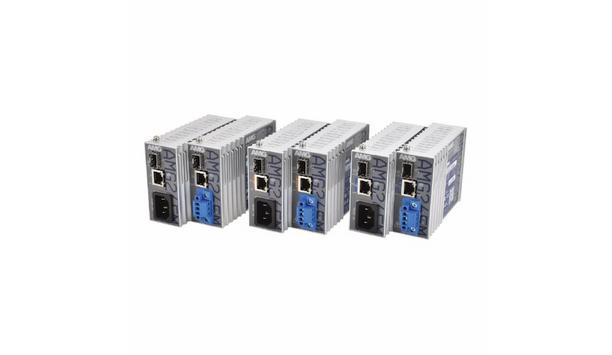Sony SNCA-HPOE1 PoE midspan with 100 ~ 240 VAC input voltage
Technical Specification
- Make: Sony
- Model code: SNCA-HPOE1
- Input Voltage: 100 ~ 240 V AC
- Output Voltage: 55 V DC
- Power Consumption: 30 W
The SNCA-HPOE1 is a single-port midspan solution that provides remote Power over Ethernet (PoE) for a wide range of current and emerging high-power applications. It can reliably deliver up to 30W of power over CAT5 cabling for devices including 802.11n wireless access points, pan-tilt-zoom (PTZ) networked video security cameras and videophones. The SNCA-HPOE1 is standards compliant with IEEE 802.3at PoE, and is also backward-compatible with IEEE802.3af. It can provide power for 10/100Base-T network devices, as well as emerging Gigabit (1000Base-T) devices.
Read more| Make | Sony |
|---|---|
| Manufacturer | Sony Professional Solutions Europe |
| Category | CCTV>Power supplies & batteries |
| Model code | SNCA-HPOE1 |
| Input Voltage | 100 ~ 240 V AC |
| Output Voltage | 55 V DC |
| Power Consumption | 30 W |
| Power Supplies & Batteries | Yes |
| Environmental Specifications |
Operating Temperature C: -20 ~ +40 C (-4 ~ +104 F) Operating Humidity %: 0 ~ 90 |
| Physical Specifications |
Dimension mm: 53 x 33 x 140 Weight g: 200 |
| Additional info | The SNCA-HPOE1 is a single-port midspan solution that provides remote Power over Ethernet (PoE) for a wide range of current and emerging high-power applications. It can reliably deliver up to 30W of power over CAT5 cabling for devices including 802.11n wireless access points, pan-tilt-zoom (PTZ) networked video security cameras and videophones. The SNCA-HPOE1 is standards compliant with IEEE 802.3at PoE, and is also backward-compatible with IEEE802.3af. It can provide power for 10/100Base-T network devices, as well as emerging Gigabit (1000Base-T) devices. |
| Download PDF version Download PDF version | |
- See other Sony products
- Sony IP Dome cameras
- Sony CCTV camera housings
- Sony Dome cameras
- Sony IP cameras
- Sony CCTV camera mounts
Related Whitepapers
Defining a strategy for migrating from analogue to IP
Preventing retail losses with intelligent HD surveillance
Harness the power of Full HD picture quality
Palm vein recognition
DownloadThe key to unlocking K12 school safety grants
Download5 surprising findings from OT vulnerability assessments
DownloadHoneywell GARD USB threat report 2024
DownloadSelecting the right network video recorder (NVR) for any vertical market
Download
























